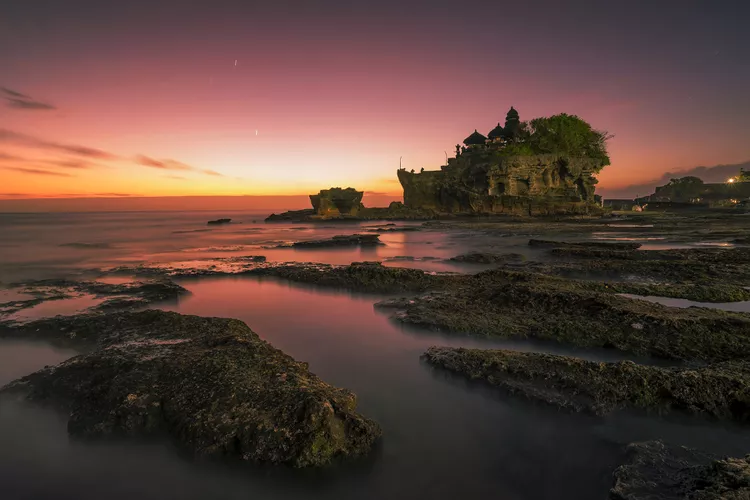1. Introduction to Bali
The Indonesian province of Bali wields a magic out of all proportion to its acreage. For such a small landmass (it’s only slightly larger than the state of Rhode Island), Bali’s shores, plains and volcanic peaks hide thousands of temples, miles of trekking and biking trails, and innumerable selfie-worthy views.
2. The Allure of Balinese Culture
While Bali’s natural wonders certainly rank among Southeast Asia’s best, it’s the island’s unique Balinese culture that seals the deal for many tourists. The locals’ quiet but devout Hinduism expresses itself in amazing art, vibrant performances of puppetry and dance, and regular festivals held at temples that preserve the island’s millennia-old ways of life in stone.
3. Exploring Bali’s Regions
And yet the heartland—where much of that magic manifests—is avoided by most tourists to Bali, who stay around South Bali for its beaches, nightlife and shopping. They might make a stopover at the cultural hotspot of Ubud, true—but what of East Bali’s diving and volcano trekking trails? What of North Bali’s unspoiled beaches?
4. South Bali: Start Here, but Don’t Stop
:max_bytes(150000):strip_icc():format(webp)/02_jalanlegian_bali-588479955f9b58bdb393e5dc.jpg)
South Bali tapers and suddenly widens at its lowest extremity. The majority of Bali’s tourist infrastructure can be found here, covering most places not more than twenty minutes’ drive from the Ngurah Rai International Airport straddling the goblet’s neck.
5. Surfing, Sunning, and Partying on South Bali’s Beaches
:max_bytes(150000):strip_icc():format(webp)/03_kutabeach_bali-5884799b3df78c2ccdae5e37.jpg)
For good or for ill, South Bali’s beaches are synonymous with the phrase “Bali” – the surf schools along Kuta Beach; beach resorts on both coasts; and family travelers shoulder-to-shoulder with backpackers, both contributing to the packed and party-like atmosphere.
6. East Bali: In the Shadow of Bali’s Holiest Mountain
:max_bytes(150000):strip_icc():format(webp)/04_candidasa_bali-588479ca3df78c2ccdae5f04.jpg)
The eastern coast of Bali serves as a pleasant break from the rampant party scene in the island’s south. Most of the tourist trails in East Bali are pleasantly spared from huge crowds, with the possible exception of the “Mother Temple” Pura Besakih on the slopes of Gunung Agung.
7. Diving & Snorkeling Around East Bali’s Beaches
:max_bytes(150000):strip_icc():format(webp)/IMG_4978-58d6bcdedc94479c8ba1ff1261682097.jpg)
The black volcanic sand beaches around East Bali are quieter and wilder than those in the overpopulated south, but it’s the dive sites that have real drawing power. Sandy slopes, wrecks, drop-offs, volcanic outcrops, and coral ridges brimming with sea life are all easily accessible.
8. Ubud & Central Bali: A Cultural Retreat
:max_bytes(150000):strip_icc():format(webp)/06_ubud_palace_bali-58847a205f9b58bdb393e7e5.jpg)
Ubud serves as the “anti-Kuta”: its elevated, inland location in Central Bali puts it far from the hard-partying crowd, while its heritage as a town for artists attracts visitors seeking to experience Bali’s rich culture first-hand.
9. North Bali: Scenic and Quirky
:max_bytes(150000):strip_icc():format(webp)/PuraUlunDanuBratan-06-ef1708b1476f4613a015cb2642c2048c.jpg)
The regency of Buleleng in Bali’s extreme north was once the colonial stronghold centered in the city of Singaraja. The flight of surfers has led visitors seeking escape from the madness in the South to find peace on the black volcanic sands of Lovina Beach.
10. West Bali: The Last True Wilderness
:max_bytes(150000):strip_icc():format(webp)/10_westbalibuffalo-58847aa73df78c2ccdae6617.jpg)
The westernmost point of Bali is often treated as a stopover by tourists passing through Gilimanuk to or from the city of Banyuwangi on eastern Java, yet much beauty lies waiting if you stop at certain points along the highway that connects Gilimanuk to the south.




